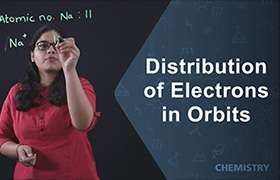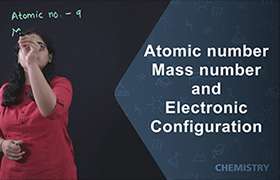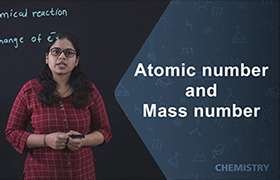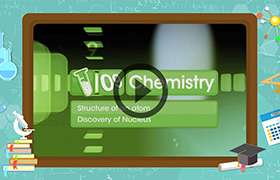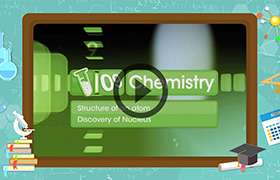CBSE Class 9 Answered
For this you must know the atomic numbers of all the elements.
If number of electrons, protons and neutrons are given we can find whether the element is cation or anion in a following way:
Case I:
If the no. of protons given are 11, no. of electrons also 11 and no. of neutrons 12 then,
Atomic number = 11
Mass number = 23
Since, atomic number is 11, the element is sodium. 1123Na. The electronic configuration of sodium atom is 2, 8, 1. It has 1 electron in its outermost shell. Thus, sodium atom will lose 1 electron to form a cation. Since sodium atom loses an electron it is a cation Na+.
Case II:
If the no. of protons given are 17, no. of electrons also 17 and no. of neutrons 18.5 then,
Atomic number = 17
Mass number = 35.5
Since, atomic number is 17, the element is chlorine. 1735Cl. The electronic configuration of chlorine atom is 2, 8, 7. The chlorine atom is 1 electron deficient to complete its outermost octet to achieve noble gas configuration. Thus, chlorine atom will accept 1 electron from other atom to achieve noble gas configuration. Since, chlorine accepts electron, it is an anion. Cl-.
Case III:
Let us take any number say, 6.
If there are 6 protons, 6 neutrons and 6 electrons, then the element is carbon. As, its atomic number is 6.
Atomic number = Number of protons = Number of electrons
Carbon atoms are tetravalent. This means that they have to either lose or gain four electrons to acquire stability. But it is difficult for the atoms to lose or gain four electrons as it requires huge amount of energy. So it shares electrons with other atoms. Now, as cations or anions are formed due to gaining or losing of electrons (or the formation of ionic bonds),carbon does not form ions(as it forms covalent bonds).
Case IV:
If the number of protons are 6, number of electrons are 6 and number of neutrons are 7.
Therefore, atomic number = 6
Atomic mass = 13
Since, atomic number is 6, the element is carbon. Since mass number is 13, it is an isotope of carbon. Carbon-13. 613C.



